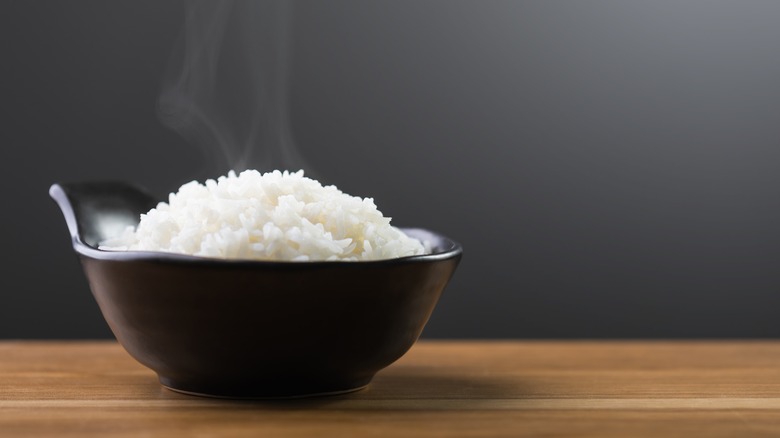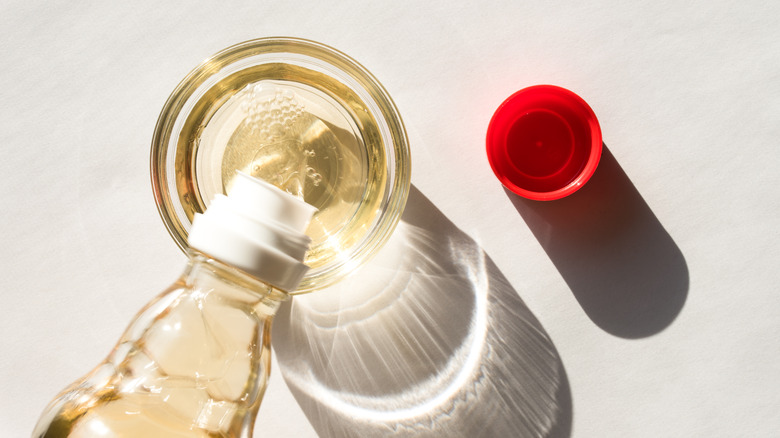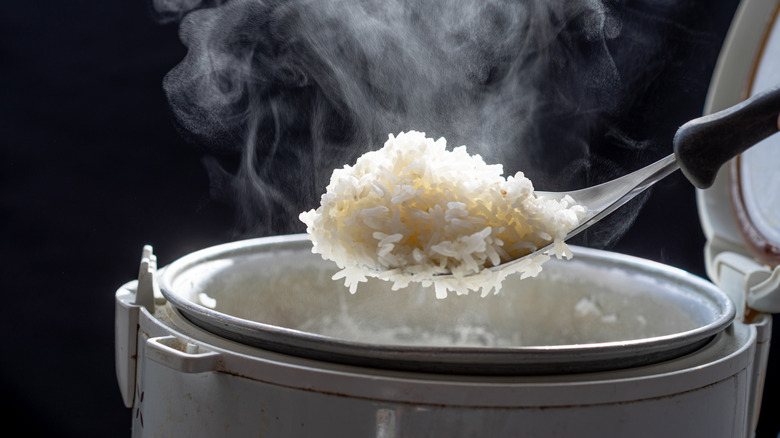The Vinegar Hack You Need For Extra Fluffy Rice
You can follow instructions on how to cook rice to the letter, but every now and then, you'll still end up with sticky, clumpy, and "heavy" rice. Unfortunately, that happens to the best of us. The first thing to do is to check and make sure your rice hasn't expired. Rice that's been left exposed to air for too long can turn mushy when cooked, and unfortunately, there's no fix for that. If the rice is still fresh and you crave a lighter, fluffier texture, here's an easy trick that works: add a splash of vinegar.
While cooking rice with vinegar may sound a little unorthodox, it's actually a clever trick you can use to keep your rice from clumping. There's science behind it — vinegar helps rinse out and break down the starches on the rice's surface, which are responsible for making the grains stick together as they cook. Used in a small amount, your rice will taste and smell exactly the same, except with a much more appetizing texture.
How to use vinegar for fluffier rice
Cooking rice with vinegar is really simple. No matter if you're making basic white rice, jasmine, basmati, or any other type of rice, the method's pretty much the same. Start by rinsing the rice a couple of times with cold water. This helps wash off some of the surface starch that can make the rice sticky. You can rinse the rice in a strainer or right in the pot — just be careful not to overdo it and break the rice. And don't toss that used water! It's packed with vitamins and makes for some nutritious plant food.
After rinsing, add the right amount of water based on how much rice you're cooking. Now comes the key step: Add a teaspoon of vinegar for every cup of rice. That's enough to make a difference without leaving a sour taste. White vinegar is a common choice, but if there's none in your pantry, apple cider vinegar works, too. Once you've added the vinegar, cook the rice as you normally would. (And don't worry about the smell of vinegar; most of it will float away with the steam.)
The post-cooking step matters, too
Vinegar is a real game-changer for rice texture, but what you do after cooking is crucial, too. Once the rice is done, let it rest for a few minutes. Then, open the lid and give it about 30 seconds to let the steam on top escape. Be careful in this step — lift the lid slowly, and make sure your face and hands are not directly over the pot because the steam can be burning hot!
When the steam's calmed down a bit, use a rice scoop or spatula to turn up and loosen the rice. Make sure you reach all the way to the bottom of the pot. This not only helps separate the grains, but it also lets out any extra moisture or trapped steam, so your rice can dry out enough to avoid clumping. Any lingering smell of vinegar will also escape during this step, leaving you with light, airy, and tasty rice.


